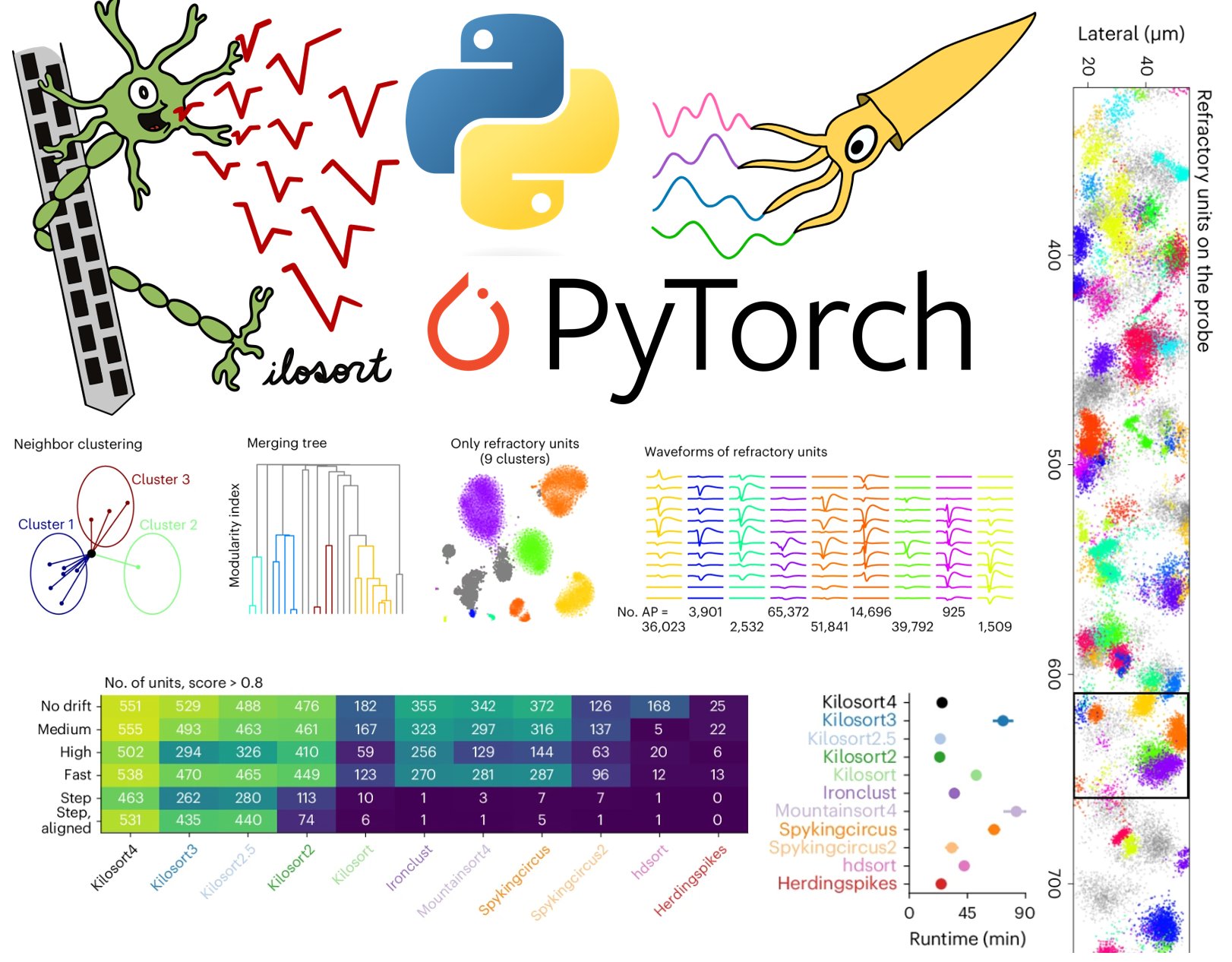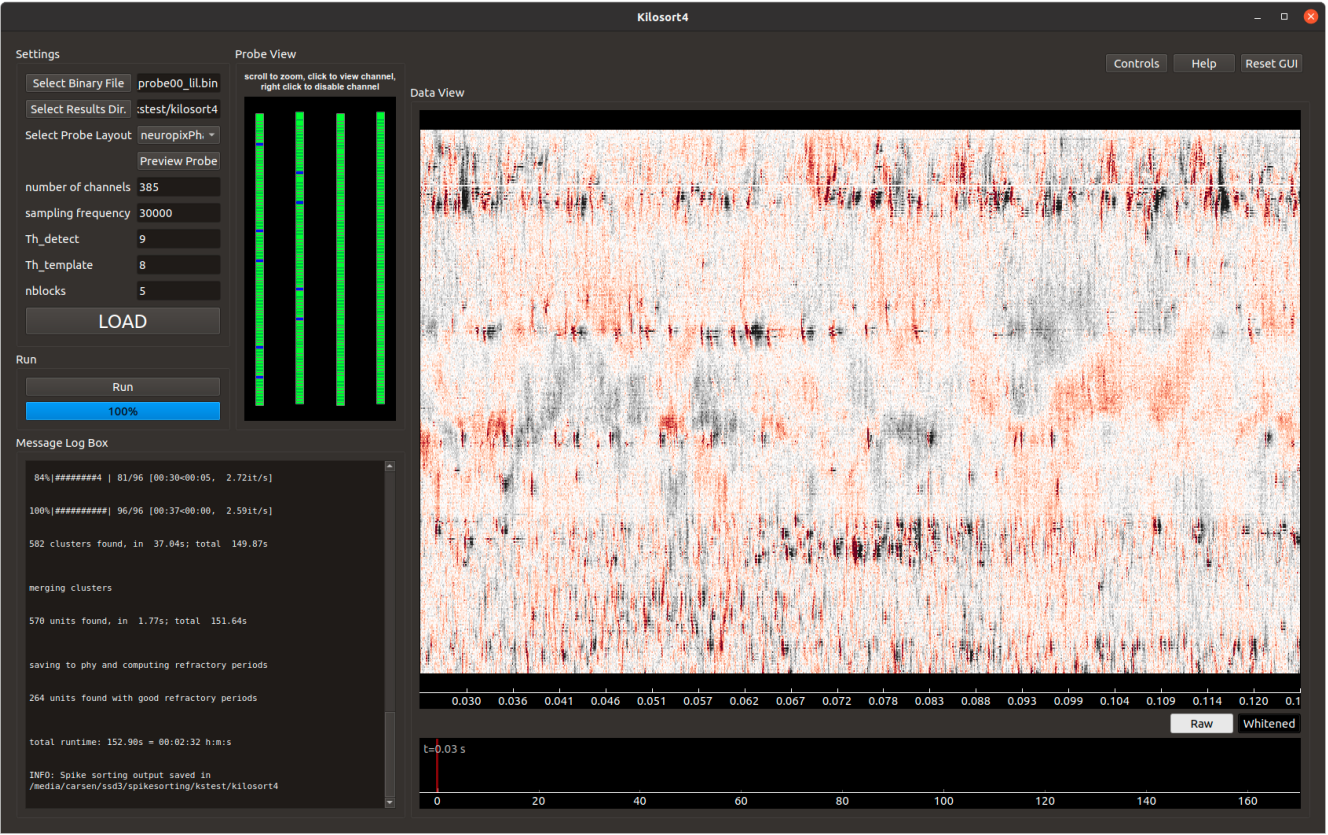Spike sorting with Kilosort4
Analysis tool for accurate spike sorting, which is the computational process of extracting the firing times of single neurons from recordings of local electrical fields.
Spike sorting is the computational process of extracting the firing times of single neurons from recordings of local electrical fields. This is an important but hard problem in neuroscience, made complicated by the nonstationarity of the recordings and the dense overlap in electrical fields between nearby neurons. To address the spike-sorting problem, we have been openly developing the Kilosort framework. Here we describe the various algorithmic steps introduced in different versions of Kilosort. We also report the development of Kilosort4, a version with substantially improved performance due to clustering algorithms inspired by graph-based approaches. To test the performance of Kilosort, we developed a realistic simulation framework that uses densely sampled electrical fields from real experiments to generate nonstationary spike waveforms and realistic noise. We found that nearly all versions of Kilosort outperformed other algorithms on a variety of simulated conditions and that Kilosort4 performed best in all cases, correctly identifying even neurons with low amplitudes and small spatial extents in high drift conditions.
paper | code | talk | HHMI news article | preprint


Powered by Quarto. © Marius Pachitariu & Carsen Stringer lab, 2023.